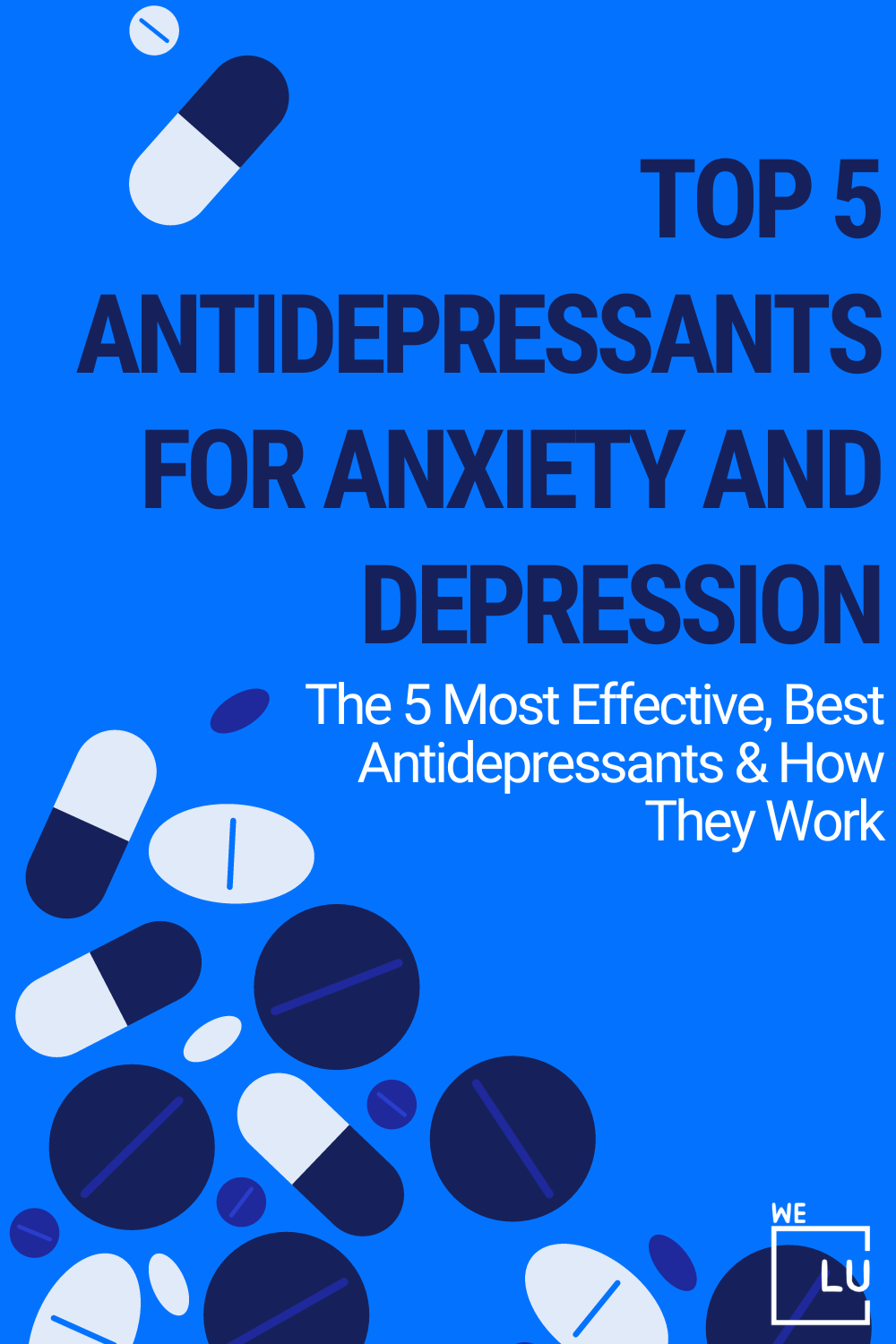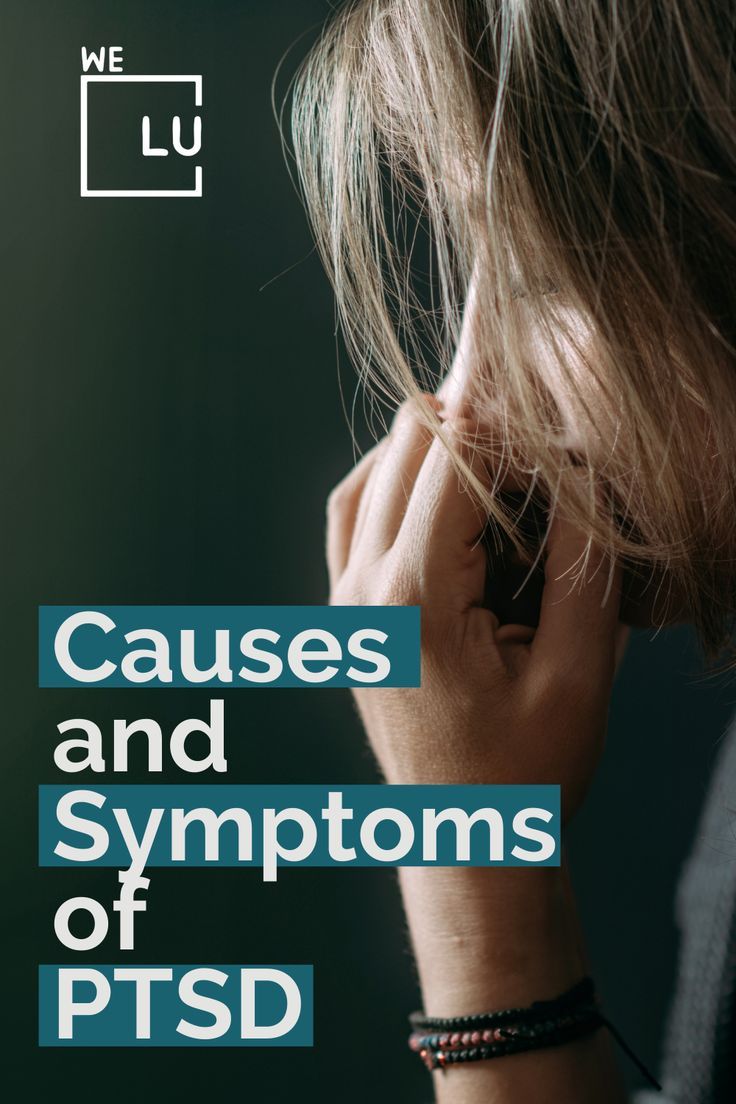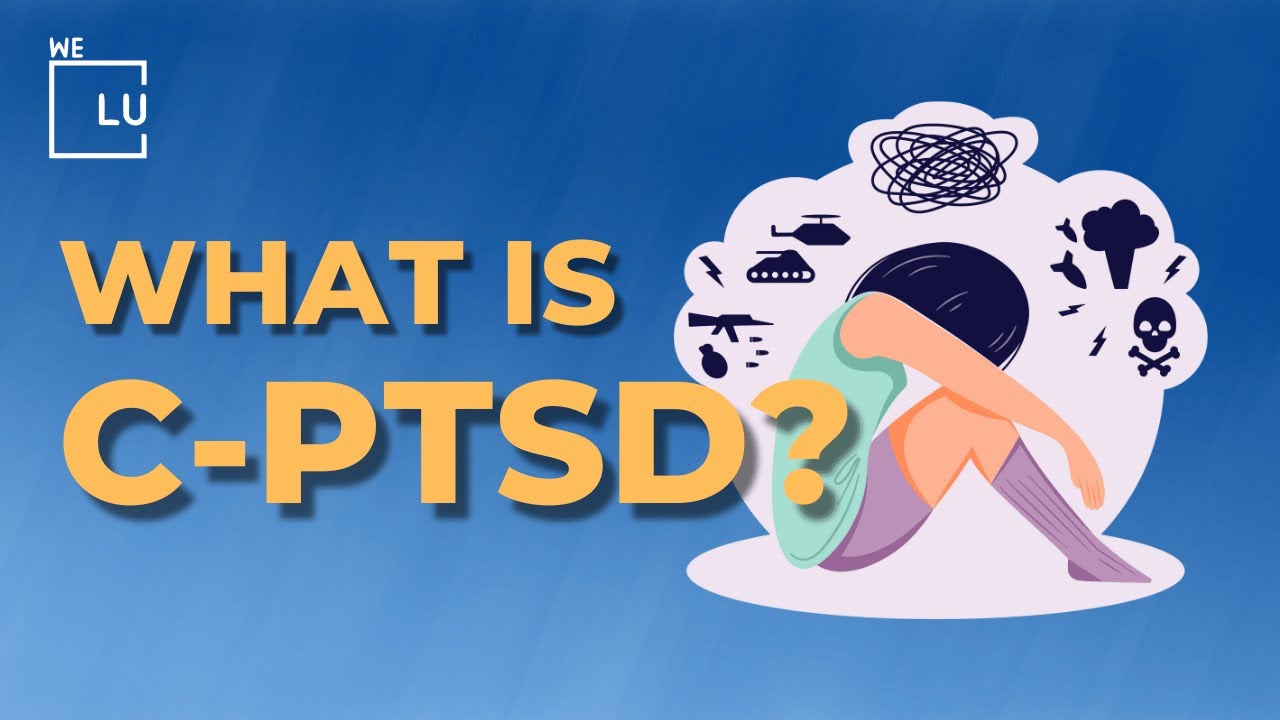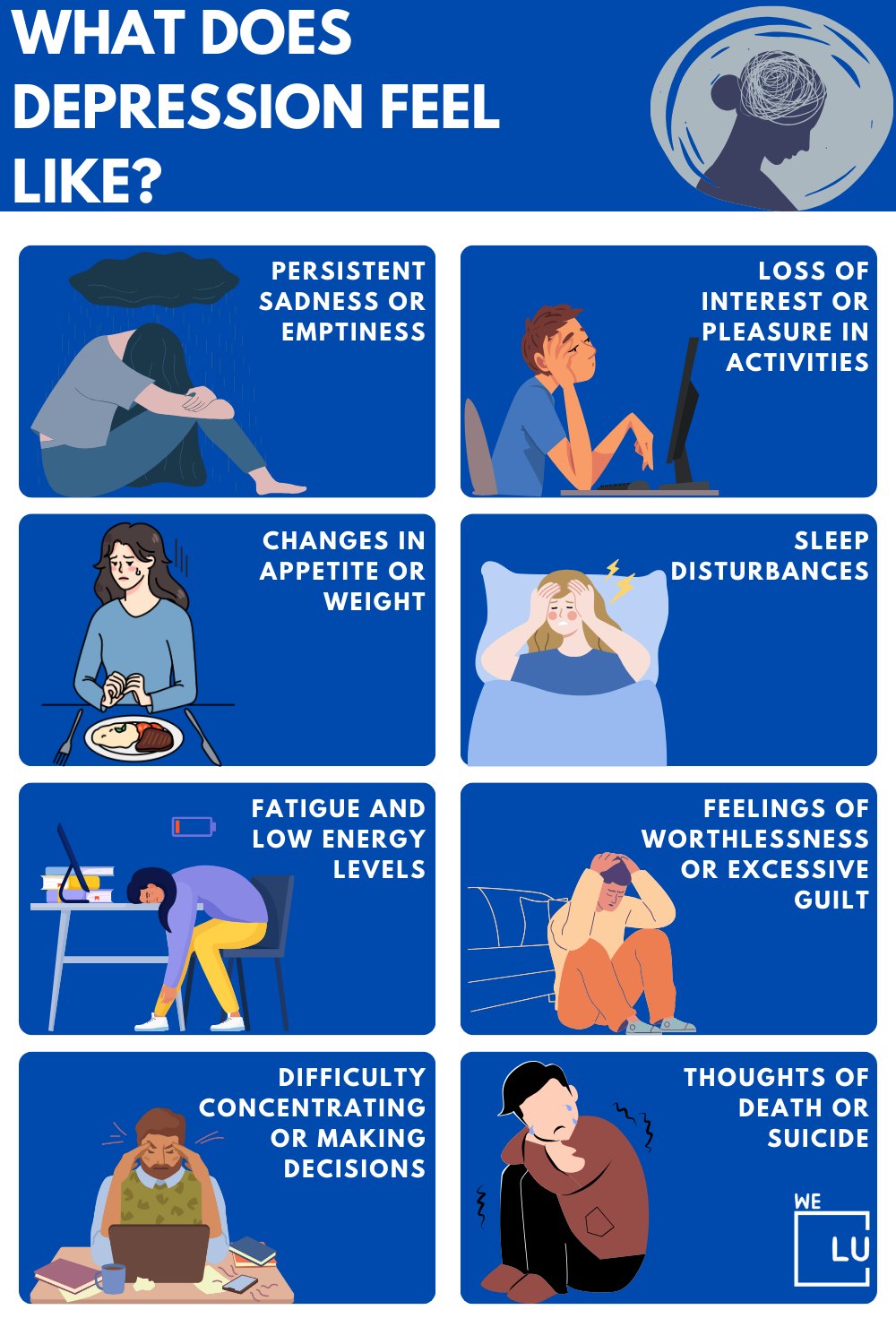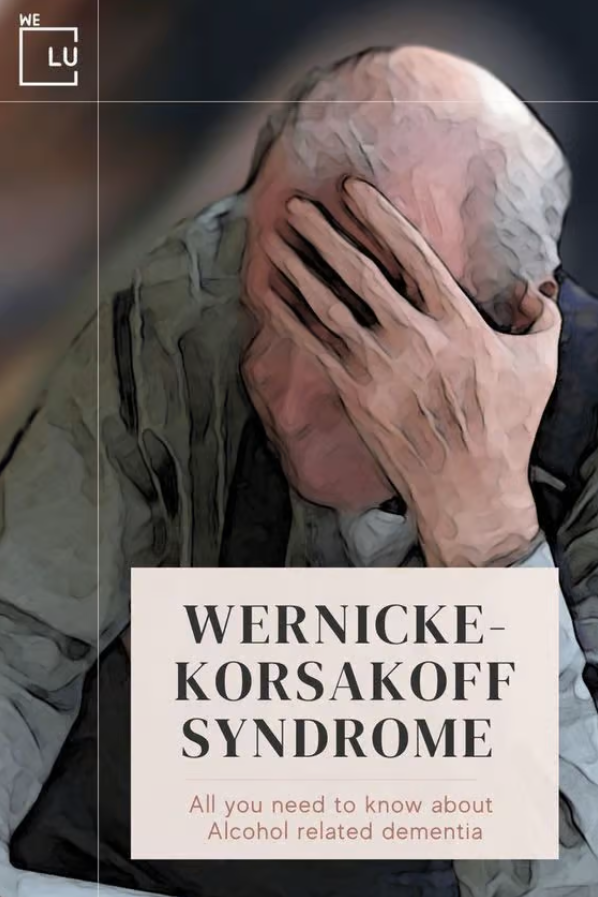Paranoid Personality Disorder
Paranoid Personality Disorder (PPD) is a complex mental health condition characterized by mistrust, suspicion, and hostility toward others. Individuals with PPD often believe that others are out to harm, deceive, or manipulate them, even without evidence supporting these beliefs. This article delves into Paranoid Personality Disorder, exploring its defining symptoms, potential causes, and available treatment options. By shedding light on this challenging disorder, we aim to provide a comprehensive understanding of PPD and offer insights into how individuals and their loved ones can navigate the journey toward healing and well-being.
Paranoid Personality Disorder Symptoms
Paranoid Personality Disorder (PPD) is characterized by symptoms that revolve around persistent mistrust, suspicion, and interpretation of others’ motives as malevolent. These symptoms can significantly impact an individual’s thoughts, emotions, behaviors, and relationships. Here are some key symptoms commonly associated with Paranoid Personality Disorder:
- Mistrust and Suspicion: Individuals with PPD tend to be overly suspicious of others. They may believe people are trying to deceive, harm, or exploit them, even without concrete evidence. This pervasive mistrust can lead to constant doubt and skepticism about others’ intentions.
- Hypervigilance: Those with PPD are often hypervigilant and hyper-aware of their surroundings. They are constantly looking for signs of potential threats or betrayal, which can contribute to anxiety and stress.
- Interpersonal Difficulties: People with PPD often struggle to build and maintain close relationships due to mistrust. They may find it hard to confide in others, suspecting that even well-intentioned actions have ulterior motives.
- Feelings of Persecution: Individuals with PPD may feel persecuted or targeted, even when no objective evidence supports such beliefs. They might interpret neutral or positive actions as deliberate attempts to harm them.
- Reluctance to Forgive: Holding grudges and being unforgiving of perceived slights is common among those with PPD. They may believe that others intentionally seek to hurt them, leading to a cycle of resentment.
- Hostility and Defensiveness: Responding defensively to perceived threats, criticism, or insults is a hallmark of PPD. Individuals with this disorder may react with anger, aggression, or verbal confrontations in response to perceived attacks.
- Isolation: The mistrust and fear associated with PPD often lead to social isolation. Individuals may withdraw from social interactions, preferring to be alone to avoid potential confrontations or betrayals.
- Difficulty Relaxing: The constant fear of being taken advantage of or harmed can make it hard for individuals with PPD to relax and feel at ease in social situations.
- Lack of Self-Awareness: Some individuals with PPD may lack insight into their behavior and may not recognize how suspiciousness and hostility affect their relationships and daily life.
It’s essential to note that these symptoms can vary in intensity and may not always be present in every individual with PPD. If you or someone you know is experiencing these symptoms and they are causing distress or impairing daily functioning, seeking professional help is recommended. A mental health professional can provide a proper assessment, diagnosis, and guidance for effective treatment strategies.


Skip To:
Learn More:
Get Help. Get Better. Get Your Life Back.
Searching for Accredited Dual Diagnosis Mental Health Centers Near You?
Even if therapy failed previously, or are in the middle of a difficult crisis, we stand ready to support you. Our trusted behavioral health specialists will not give up on you. When you feel ready or just want someone to speak to about counseling alternatives to change your life call us. Even if we cannot assist you, we will lead you to wherever you can get support. There is no obligation. Call our hotline today.
FREE 24/7 Dual Diagnosis Mental Health Services HotlineParanoid Disorder Fact Sheet
- Prevalence: The prevalence of PPD in the general population is estimated to be around 2-4%, making it one of the more common personality disorders.
- Onset: PPD symptoms typically emerge in early adulthood and are more prevalent in men than in women.
- Cluster A Disorder: PPD falls under Cluster A personality disorders in the DSM-5, characterized by odd or eccentric behaviors and thought patterns. Behavior, thoughts, and emotions.
- Symptoms: Common symptoms of PPD include chronic mistrust, hypersensitivity to perceived threats, reluctance to confide in others, persistent grudges, and a tendency to interpret benign remarks as insults or criticisms.
- Impact on Relationships: Due to mistrust, individuals with PPD often struggle to build and maintain close relationships. They may become isolated and have difficulty functioning in social settings.
- Co-occurring Disorders: PPD can coexist with other mental health disorders, such as anxiety disorders, depression, and substance use disorders.
- Causes: The exact cause of PPD is unknown, but a combination of genetic, environmental, and psychological factors is believed to contribute to its development.
- Diagnosis: A diagnosis of PPD is made by a mental health professional based on a comprehensive assessment of an individual’s behavior, thoughts, and emotions.
Paranoid Personality Disorder Statistics
Paranoid Personality Disorder (PPD) is a mental health condition characterized by pervasive mistrust, suspicion, and hostility toward others. Here are some key statistics related to PPD:
- Prevalence:
- The prevalence of Paranoid Personality Disorder in the general population is estimated to be 2-4%.
- PPD is more commonly diagnosed in men than in women.
- Onset:
- Symptoms of PPD typically start in early adulthood and tend to be stable over time.
- The onset of PPD is often gradual, making it challenging to identify in its early stages.
- Comorbidity:
- Individuals with PPD often have co-occurring mental health disorders like anxiety, depression, and substance use disorders.
4.4%
From 2.3 to 4.4% of the general US population is estimated to have a paranoid personality disorder.
Source: National Institute on Mental Health
4%
According to estimates, 2.3 and 4% of adult Americans in the United States are thought to have a paranoid personality disorder.
Source: National Institute on Mental Health
17.0%
Prevalence in psychiatric clinics ranges from 2 – 10% and 10 – 30% in psychiatric inpatient hospitals.
Source: National Institute of Mental Health
What is PPD Disorder?
PPD stands for “Paranoid Personality Disorder.” It is a mental health condition characterized by pervasive and enduring mistrust, suspicion, and hostility toward others. Individuals with PPD often interpret the actions and motives of others as malevolent or intending harm, even when there is little or no evidence to support such beliefs. This chronic mistrust can significantly impact their thoughts, emotions, behaviors, and relationships.
Critical features of PPD include:
- Excessive Mistrust: People with PPD have an excessive and unwarranted mistrust of others, even those close to them. They may be highly suspicious of others’ intentions and question the motives behind their actions.
- Hypervigilance: Individuals with PPD are often hyper-aware and constantly looking for potential threats or betrayals. They may interpret neutral or benign actions as evidence of ill intent.
- Isolation: Due to mistrust, individuals with PPD may have difficulty forming and maintaining close relationships. They may be reluctant to confide in others and withdraw from social interactions.
- Reluctance to Forgive: Holding grudges and being unforgiving of perceived slights is common among individuals with PPD. They may believe that others are intentionally seeking to hurt them.
- Interpretation of Innocent Actions: People with PPD often interpret harmless comments or actions as insults, criticism, or deception attempts. This can lead to unnecessary conflicts and strained relationships.

Causes of Paranoid Personality Disorder
The exact causes of Paranoid Personality Disorder (PPD) are not fully understood, but it’s believed that a combination of genetic, environmental, and psychological factors contribute to its development. Here are some potential factors that may play a role:
- Genetic Factors: Evidence suggests genetics may play a role in developing PPD. People with a family history of personality disorders, mainly Cluster A personality disorders (including PPD), may have a higher risk of developing the disorder.
- Early Childhood Experiences: Traumatic experiences, such as neglect, abuse, or inconsistent parenting, may contribute to developing PPD. These experiences can shape a person’s worldview and impact their ability to trust others.
- Biological Factors: Some studies suggest that imbalances in certain neurotransmitters or brain structures could be associated with developing PPD. However, more research is needed to understand these biological factors fully.
- Cognitive Factors: Distorted thought patterns and cognitive biases may contribute to the mistrust and suspicion characteristic of PPD. Individuals with PPD may be more prone to interpreting neutral or positive situations as threatening.
- Environmental Factors: Growing up in an environment characterized by high levels of conflict, instability, or perceived threat could contribute to developing PPD. These environments may reinforce a person’s tendency to be hyper-vigilant and mistrustful.
- Personality Traits: Certain personality traits, such as high levels of neuroticism or introversion, may make individuals more susceptible to developing PPD. However, these traits alone are not sufficient to cause the disorder.
- Coping Mechanisms: Some theories suggest that individuals may develop PPD to cope with vulnerability or insecurity. Mistrust and suspicion can serve as a defense mechanism to protect oneself from potential harm.
It’s essential to note that PPD is a complex disorder with multiple potential contributing factors. Not everyone exposed to these factors will develop the disorder, and the interplay between genetics, environment, and individual experiences can vary widely.
Diagnosing and treating PPD often requires a comprehensive evaluation by a qualified mental health professional. Understanding the potential factors contributing to PPD can provide insights into its development, but a thorough assessment is necessary for accurate diagnosis and the creation of an effective treatment plan.
Paranoid Personality Disorder Test
Are you experiencing symptoms associated with paranoid personality disorder? We offer an incredible paranoia test designed to determine if you exhibit signs of paranoia. By taking this Paranoid Personality Disorder test, you can gain insights into the reasons behind your excessive paranoia. Paranoid personality disorder is a uncommon condition characterized by the belief and sensation of being constantly threatened. These thoughts are often referred to as delusions. Do you suspect that someone is posing a threat to you? Take our paranoia test and discover the truth.
*By taking this free quiz, you may obtain your results online and in your email box. You'll have the opportunity to opt-in to learn more about your symptoms, talk to a mental health consultant and join our newsletter. Rest assured your information is private and confidential. Results, consultations and assessment are provided without any cost to you and without any obligation. If you do not wish to provide your contact information, you may omit it during your quiz. Thank you for opting in and participating. To you best of health.

End the Emotional Pain. Get Your Life Back.
Feeling Depressed, Anxious or Struggling with Mental Health Illness? Get Safe Comfortable Mental Health Dual Diagnosis High-Quality Therapy From Counselors That Care. Begin Your Recovery Now.
Hotline (855) 940-6125Paranoid Personality Disorder Treatment
Treatment for Paranoid Personality Disorder (PPD) typically involves a combination of psychotherapy, medication, and support from loved ones. While treatment can be challenging due to the mistrust and suspicion characteristic of PPD, interventions are designed to help individuals manage their symptoms, improve their interpersonal skills, and enhance their overall well-being.
1. Psychotherapy:
- Cognitive-Behavioral Therapy (CBT): CBT is often the primary therapeutic approach for PPD. It helps individuals identify and challenge distorted thought patterns, such as overly suspicious or mistrustful beliefs. Individuals can learn to replace negative interpretations with more balanced and realistic ones through CBT.
- Social Skills Training: This therapy improves interpersonal skills, communication, and conflict resolution. It helps individuals with PPD develop healthier relationships and navigate social interactions more effectively.
- Group Therapy: Group therapy provides a controlled environment for individuals with PPD to practice social skills and gain insights from others facing similar challenges. It also fosters a sense of support and connection.
2. Medication:
- While no specific medication is approved solely for PPD, certain medications can help manage associated symptoms such as anxiety, depression, or paranoia.
- Antidepressants: Selective serotonin reuptake inhibitors (SSRIs) or other antidepressants may be prescribed to address mood-related symptoms.
- Antipsychotic Medications: In cases where paranoid thoughts are severe, antipsychotic medications may help alleviate excessive suspicions and distortions.
3. Building a Supportive Network:
- The involvement of family and friends in the treatment process can provide emotional support and encouragement for individuals with PPD to engage in therapy.
- Loved ones can learn about PPD, develop communication strategies, and help create a safe and supportive environment.
4. Patience and Trust Building:
- Treatment progress for PPD can be slow due to the inherent mistrust that individuals may have. It’s essential for mental health professionals and loved ones to be patient and build trust over time.
5. Long-Term Outlook:
- PPD treatment often requires a long-term commitment. Changes in thought patterns and behaviors may take time to become ingrained.
- Early intervention and consistent treatment adherence can improve functioning and quality of life.
6. Addressing Resistance:
- People with PPD may be resistant to therapy due to their mistrustful nature. Therapists working with personality disorders can navigate this resistance and gradually build rapport.
7. Self-Help Strategies:
- Learning relaxation techniques, practicing mindfulness, and engaging in stress-reduction activities can complement formal treatment efforts.
It’s essential to recognize that treatment outcomes can vary based on individual factors, including the severity of symptoms and the person’s willingness to engage in therapy. Seeking help from qualified mental health professionals specializing in personality disorders is crucial for effective treatment planning and implementation.
Paranoid Personality Disorder Examples
Paranoid Personality Disorder (PPD) is characterized by pervasive mistrust and suspicion toward others. Individuals with PPD often display exaggerated skepticism, interpreting innocent actions as evidence of malevolent intentions. For instance, a person might believe that a coworker’s friendly comment is an attempt to undermine them. They may also hold grudges and find it challenging to forgive perceived slights, leading to strained relationships. Additionally, individuals with PPD can be hypersensitive to criticism and quick to respond defensively or with hostility. These examples highlight how PPD shapes individuals’ interactions, making them prone to interpreting the world around them through a lens of distrust and suspicion.
| Symptom | Description |
|---|---|
| Excessive Mistrust | Believing that others have hidden motives and are out to deceive, harm, or manipulate, without clear evidence. |
| Hypervigilance | Being constantly on guard, interpreting benign actions as potential threats or betrayals. |
| Isolation | Withdrawing from social interactions due to fear of being hurt or exploited by others. |
| Reluctance to Forgive | Holding grudges and being unforgiving of perceived slights, even when they may not be intentional. |
| Interpersonal Difficulties | Struggling to form and maintain close relationships due to mistrust and suspicions towards others. |
| Hostility and Defensiveness | Responding with aggression or anger to perceived threats or criticism, even when none may be intended. |
| Interpretation of Innocence | Interpreting neutral or positive comments or actions as criticism, insults, or attempts to deceive. |
First-class Facilities & Amenities
World-class High-Quality Mental Health Services & Behavioral Health Substance Abuse Treatment
Rehab Centers TourRenowned Mental Health Centers. Serene Private Facilities. Inpatient Rehab Programs Vary.
Mental Health Helpline (855) 940-6125Proven recovery success experience, backed by a Team w/ History of:
15+
Years of Unified Experience
100s
5-Star Reviews Across Our Centers
10K
Recovery Successes
- Comprehensive Dual-Diagnosis Treatment
- Complimentary Family & Alumni Programs
- Coaching, Recovery & Development Events
- Comfortable Onsite Medical Detox Center
Paranoid Delusional Disorder
Paranoid Delusional Disorder, also known as Delusional Disorder, Somatic Type, is a mental health condition characterized by persistent and false beliefs (delusions) centered around physical health or bodily functions. Individuals with this disorder firmly hold onto these delusions despite evidence to the contrary, and the delusions often cause significant distress and impairment in their daily functioning.
Critical features of Paranoid Delusional Disorder include:

- Delusions: This disorder’s primary characteristic is delusions related to the body’s health or functioning. These delusions can take various forms, such as believing that they have a severe illness or medical condition, that they are infested with parasites, or that their body is emitting unusual odors.
- Absence of Hallucinations: Unlike some other types of delusional disorders, Paranoid Delusional Disorder does not involve prominent auditory or visual hallucinations. The delusions are primarily focused on bodily sensations or functions.
- Insight Variability: While individuals with this disorder hold firmly to their delusions, they might have moments of doubt or insight into the irrationality of their beliefs. However, these moments of doubt are generally fleeting, and the delusions persist.
- Functional Impairment: The delusions can significantly impact the individual’s daily life, leading to social isolation, avoidance of medical care, and disruption of everyday activities.
- Duration: The delusions must persist for at least one month for a diagnosis of Paranoid Delusional Disorder. The focus on physical health distinguishes it from other subtypes of Delusional Disorder, which may involve delusions about relationships, grandiosity, or jealousy.
Paranoid Personality Disorder vs Delusional Disorder
Paranoid Personality Disorder (PPD) and Delusional Disorder are distinct mental health conditions with unique characteristics. PPD is characterized by pervasive mistrust and suspicion of others, particularly their motives. Due to their intense skepticism, individuals with PPD struggle to form and maintain relationships.
| Aspect | Paranoid Personality Disorder | Delusional Disorder |
|---|---|---|
| Core Feature | Pervasive mistrust, suspicion, and hostility towards others. | Presence of persistent, false beliefs (delusions) that are not related to bodily health. |
| Nature of Delusions | Suspicious and paranoid beliefs about others’ intentions. | A wide range of delusions unrelated to bodily health, such as grandiosity or persecution. |
| Focus of Delusions | Primarily involves interpersonal interactions and motives. | Delusions can cover various themes, not limited to social interactions. |
| Insight Variability | Some individuals may have moments of doubt about their mistrustful beliefs. | Delusions are generally firmly held with minimal insight into their irrationality. |
| Bodily Concerns | Not a prominent feature; PPD does not center around bodily sensations. | Not related to bodily health; delusions involve a range of topics beyond health. |
| Impact on Social Functioning | Difficulties forming and maintaining relationships due to mistrust. | Social and occupational functioning may be affected due to preoccupation with delusions. |
| Subtypes | Paranoid Personality Disorder does not have distinct subtypes. | Delusional Disorder has subtypes based on delusion themes (erotomanic, grandiose, etc.). |
| Duration for Diagnosis | Delusions must persist for at least one month; they may wax and wane in intensity. | Presence of persistent, false beliefs (delusions) unrelated to bodily health. |
| Hallucinations | Hallucinations are not a defining feature of PPD. | Hallucinations can be present in Delusional Disorder, but they’re not primary. |
World-class, Accredited, 5-Star Reviewed, Effective Mental Health Dual Diagnosis Programs. Complete Integrated Inpatient Rehab with Free Post Discharge Therapy Planning.
CALL (855) 940-6125End the Emotional Pain Rollercoaster. Gain Stability & Happiness Through Recovery Treatment. Start Mental Health Counseling Today. Get Free No-obligation Guidance by Behaviroal Health Specialists Who Understand Mental Health Recovery.
How to Communicate with Someone with Paranoid Personality Disorder?
Communicating with someone with Paranoid Personality Disorder (PPD) requires sensitivity, patience, and understanding. The intense mistrust and suspicion characteristic of PPD can make interactions challenging, but some strategies can help foster healthier communication:
- Patience: Give them time to respond and process information.
- Empathy: Validate their feelings and concerns.
- Calmness: Maintain a composed demeanor to avoid escalation.
- Transparent Language: Use straightforward and unambiguous communication.
- Boundaries: Respect their need for space and comfort.
- Reassurance: Gently provide reassurance when appropriate.
- Private Settings: Choose quiet environments for conversations.
- Non-Confrontational: Avoid arguments or challenging their beliefs.
- Consistency: Establish a reliable communication style.
- Education: Learn about PPD to understand their perspective.
- Professional Help: Encourage seeking support therapy.

Efficient and respectful communication can help build trust and understanding with individuals with PPD.
Loving Someone with Paranoid Personality Disorder
Loving someone with Paranoid Personality Disorder (PPD) can present unique challenges. The intense mistrust and suspicion characteristic of PPD may create difficulties in building and maintaining a healthy, open relationship. Those close to individuals with PPD may find themselves navigating a delicate balance between offering support and respecting their loved one’s need for space. Patience, understanding, and clear communication are essential. Educating oneself about PPD can help loved ones grasp the complexities of the disorder and foster empathy. However, setting boundaries is essential, as excessive accommodation might inadvertently reinforce mistrustful behavior. Encouraging professional help, such as therapy, can also benefit individuals with PPD and their loved ones. Balancing care and self-care is crucial when loving someone with PPD, as navigating their fears and anxieties while maintaining personal well-being can be challenging.
Paranoid Personality Disorder Medication
Medication is often considered a component of treatment for Paranoid Personality Disorder (PPD), although there isn’t a specific medication approved solely for this disorder. The goal of medication in PPD is to manage associated symptoms such as anxiety, depression, and paranoia, which can contribute to distress and impairment. Here are some types of medication that might be considered:
- Antidepressants: Selective serotonin reuptake inhibitors (SSRIs) and other types of antidepressants may be prescribed to alleviate symptoms of anxiety and depression often seen in individuals with PPD.
- Antipsychotic Medications: These medications can help manage severe paranoia, suspicion, and distorted thinking. They can help individuals with PPD gain some relief from their symptoms and potentially improve their overall quality of life.
- Anxiolytics: These medications, such as benzodiazepines, might be used short-term to alleviate acute anxiety. However, caution is required due to the risk of dependency and its potential to affect cognition.
While medication can help manage symptoms, it may not directly target the core personality traits and thought patterns associated with PPD. A comprehensive treatment plan that addresses the multifaceted nature of the disorder is typically the most effective approach.
Experience Transformative Recovery at the We Level Up Treatment Center.
See our authentic success stories. Get inspired. Get the help you deserve.



Start a New Life
Begin with a free call to a behavioral health treatment advisor. Learn more about our dual-diagnosis programs. The We Level Up treatment center network delivers recovery programs that vary by each treatment facility. Call to learn more.
- Personalized Care
- Caring Accountable Staff
- Comfortable Amenities
- Licensed & Accredited
- Renowned w/ 5-Star Reviews
We’ll Call You
Popular Paranoid Personality Disorder FAQs
-
Can Someone with Paranoid Personality Disorder Be Dangerous?
People with PPD are not inherently dangerous. However, their intense suspicion and mistrust can sometimes lead to conflicts or strained relationships. Very rarely, extreme paranoia might contribute to confrontations, but violence is not a defining characteristic of PPD.
-
What is Paranoid Personality Disorder (PPD)?
Paranoid Personality Disorder is a mental health condition characterized by a pervasive and unwarranted mistrust of others, leading to suspicion, hostility, and difficulty forming close relationships.
-
How is PPD diagnosed?
A mental health professional, such as a psychiatrist or psychologist, conducts a thorough assessment that includes clinical interviews, observations, and possibly psychological tests to evaluate the individual’s thoughts, behaviors, and emotions.
-
Can PPD be treated?
Yes, treatment for PPD often involves psychotherapy, particularly cognitive-behavioral therapy (CBT), to challenge distorted thought patterns. Medication, such as antidepressants or antipsychotics, can help manage associated symptoms.
8 Steps & Tips for Maintaining Your Mental Wellbeing Informative Video
Video Script
We at We Level Up FL are dedicated to personalized mental health services tailored to each person’s unique needs. Our experienced team collaborates closely with clients to create therapy programs that address their challenges and align with their goals. With empathy and support, we empower individuals to take an active role in their mental health journey by providing tools and strategies. We encourage exploration, self-discovery, and growth in a safe and nurturing environment. We understand that everyone is different, so we listen attentively and develop customized therapy plans based on individual concerns, strengths, and aspirations.
Search Drug & Alcohol Rehab / Detox & Mental Health Paranoid Personality Disorder Symptoms & Treatment Topics & Resources
Sources
- Mistrustful and Misunderstood: A Review of Paranoid Personality Disorder – PMC (nih.gov). (https://www.ncbi.nlm.nih.gov/pmc/articles/PMC5793931/) Curr Behav Neurosci Rep. 2017; 4(2): 151-165. Accessed 2023. What Is Paranoia?
- Paranoid personality disorder: MedlinePlus Medical Encyclopedia What Is Paranoia? (https://medlineplus.gov/ency/article/000938.htm) Accessed 2023.
- Merck Manual: Consumer Version. Paranoid Personality Disorder. What Is Paranoia? (https://www.merckmanuals.com/home/mental-health-disorders/personality-disorders/paranoid-personality-disorder) Accessed 4/2022.
- Weissman SH. Personality Disorders. In: Ebert MH, Leckman JF, Petrakis IL. eds. Current Diagnosis & Treatment: Psychiatry, 3e. McGraw Hill; 2019. Accessed 4/2022. What Is Paranoia?
- Paranoia and delusional disorders, Mental Health America. What Is Paranoia?
- World English Dictionary Archived 2018-05-28 at the Wayback Machine (Collins English Dictionary – Complete & Unabridged 10th Edition, 2009, William Collins Sons & Co. Ltd.) 3. informal sense: intense fear or suspicion, esp when unfounded. What Is Paranoia?
- Don’t Freak Out: Paranoia Quite Common”. Live Science. Associated Press. November 12, 2008. Retrieved September 16, 2018. What Is Paranoia?
- Green, C., Freeman, D., Kuipers, E., Bebbington, P., Fowler, D., Dunn, G., & Garety, P. (2008). Measuring ideas of persecution and social reference: the Green et al. Paranoid Thought Scales (GPTS). Psychological Medicine, 38, 101 – 111. What Is Paranoia?
- Lake, C. R. (2008-11-01). “Hypothesis: Grandiosity and Guilt Cause Paranoia; Paranoid Schizophrenia is a Psychotic Mood Disorder; a Review”. Schizophrenia Bulletin. 34 (6): 1151–1162. What Is Paranoia?
- Hypothesis: Grandiosity and Guilt Cause Paranoia; Paranoid Schizophrenia is a Psychotic Mood Disorder; a Review – PMC (nih.gov) What Is Paranoia?
- American Psychiatric Association. Diagnostic and Statistical Manual of Mental Disorders. What Is Paranoia?
- Sartorius, N., Jablensky, A., Korten, A., Ernberg, G., Anker, M., Cooper, JE., & Day, R. (1986). Early manifestations and first-contact incidence of schizophrenia in different cultures. Psychological Medicine, 16, 909 – 928. What Is Paranoia?
- Digitally supported CBT to reduce paranoia and improve reasoning for people with schizophrenia-spectrum psychosis: the SlowMo RCT (nihr.ac.uk) What Is Paranoia?
